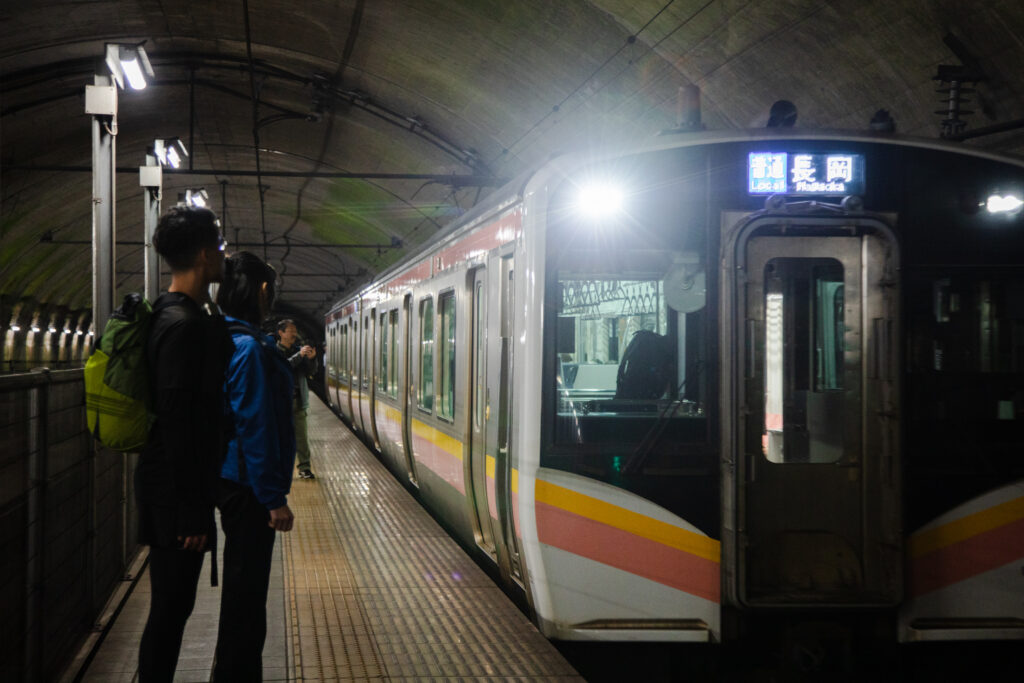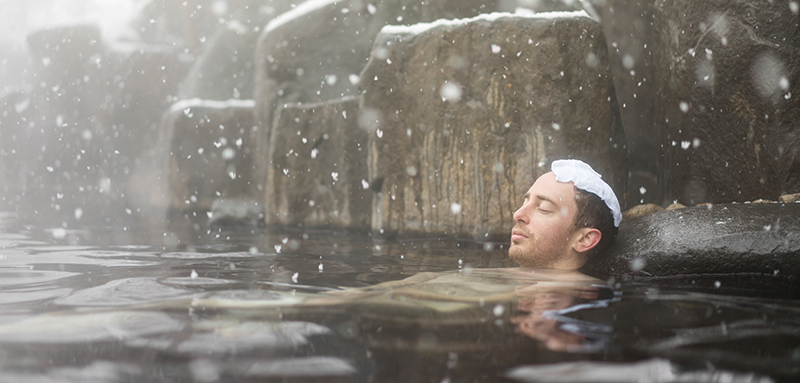Guide: Ibi Akira
Founder of HOME HOME NIIGATA, Ibi Akira has established a destination-focused travel company dedicated to showcasing local life and culture through unique tourism experiences.
_写真_YUKITABI_IMG_1803-810x1024.jpg)
The Snow Country Trail (SCT) is crafted from existing mountain paths, historic roads, and ancient trails. Among them is a military route said to have been used by the famous samurai warlord Uesugi Kenshin during his campaigns to the Kanto region. Ibi Akira, a guide from HOME HOME in Tokamachi City, offers trekking tours along this historic route.
“At our company, we run the ‘Terraced Rice Field Trekking’ tour in the Matsudai area of Tokamachi City, home to stunning terraced rice fields like Hoshitoge. The tour includes two courses: the ‘Hoshitoge Course,’ which explores local satoyama (village forests), and the ‘Inubushi Course,’ which follows a section of the Snow Country Trail along Uesugi Kenshin’s military route,” Ibi explains.
A Journey Through Nature and History
As participants walk the course, Ibi tailors the experience to their interests, sharing stories about Uesugi Kenshin’s military route, castle ruins scattered along the trail, and the diverse flora and fauna.
“The beech forests here act as natural reservoirs, absorbing water that becomes springs, mountain streams, and a vital resource for terraced rice fields. In spring, the forests are a treasure trove of wild mountain vegetables like udo, warabi, koshiabura, and myoga. In autumn, you’ll find sarunashi (a kiwi-like fruit) and mushrooms emerging,” says Ibi.
70278336_403400330379408_3905952677569232896_n-1024x768.jpg)
Understanding Terraced Rice Fields
Terraced rice fields, or tanada, are tiered paddies carved into the mountainsides. “Tanada are fed by rainwater and mountain streams rather than pumped groundwater, making them a low-impact and sustainable form of agriculture. This is made possible by the natural water-retaining power of the beech forests, often referred to as ‘nature’s dams.’ When I share stories about the harmonious relationship between nature and human life, the unchanging scenery of the satoyama, and the area’s deep history, people are captivated and eager to learn more,” Ibi shares.
The area is also renowned for its textile industry, which traces its origins to the cultivation of karamushi (ramie), locally known as aoso.
IMG_6754-1024x768.jpg)
A Trail Rich in History
Before national roads were built in the early Showa era, these paths were essential lifelines for local communities. “In winter, when cars couldn’t pass, villagers would come together to transport the sick to town hospitals on sleds,” Ibi recalls.
“The value of a guided tour lies in what you can learn, how it can be tailored to your interests, and the opportunity to discover things you wouldn’t notice on your own. Recently, we’ve had many international participants as well. While exploring alone has its merits, traveling with a local guide offers a deeper understanding of the area,” he adds.
IMG_6740-1024x768.jpg)
Recognized for Sustainability
This tour has been recognized with the Japan Tourism Agency’s “Sustainable Travel Award” for its focus on sharing knowledge about terraced rice fields, nature, history, and environmental conservation. A portion of the tour revenue is donated to local efforts to preserve these iconic landscapes.
“To protect this breathtaking scenery, we will continue to develop various experience programs,” Ibi says passionately, leaving a lasting impression.
Embark on this meaningful journey and experience the Snow Country Trail in a whole new light!


-1024x626-2.jpg)
